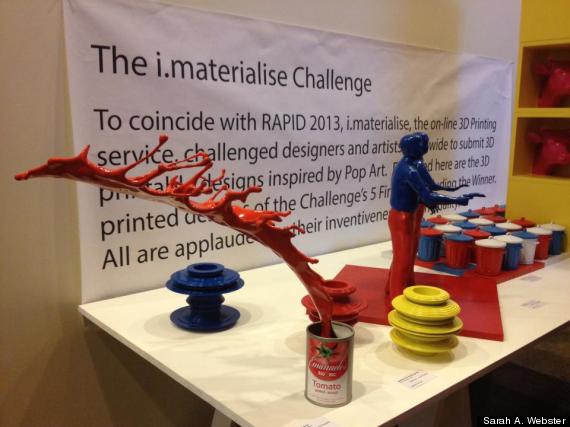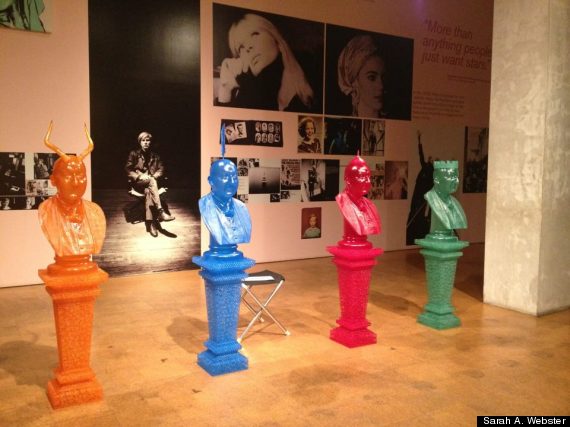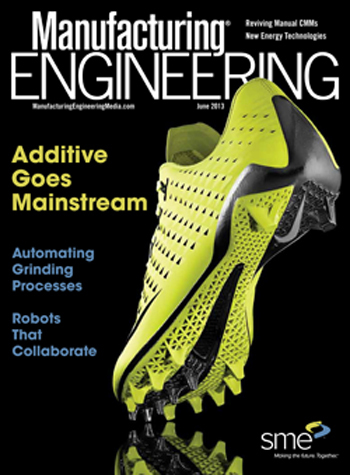PITTSBURGH -- Beam me up, Scotty. This revolution is real.
You've probably heard about 3D printing, where an item is built, layer by layer, by a printer based on a digital model.
Conceptually, these so-called printers work in a similar way to the sci-fi transporter in the Star Trek series, materializing things into matter one particle and layer at a time. The printers are so accessible now (under $1,500) that I saw one advertised in the recent SkyMall magazine while flying last week.
"It's mentioned on NPR like three times a day," Giles Gaskell, Applications Manager at Wenzel America Ltd., said to me, jokingly, at the RAPID 2013 Conference & Exposition this week in Pittsburgh.
That event is focused on varieties of 3D printing, which in the manufacturing world can also be known as "additive manufacturing," "digital manufacturing" or even "rapid prototyping."

More than 2,500 young and old men and women came to RAPID 2013, nearly double last year's attendance, to learn about all the new additive technologies that build a product from a digital model. You can now build a product from a digital model with everything from glue and paper to fused polymers and metal powers sintered together with lasers. Wenzel, for example, makes 3D scanners, which is an essential tool for collecting the digital information need to print something in 3D.
For years, the manufacturing industry debated how important this collection of additive technologies might be to its future.
Well, starting today, you can put a fork in that debate. The revolution in additive manufacturing is upon us. (It's also the cover story of Manufacturing Engineering's June issue: Additive Manufacturing Goes Mainstream.)
Additive technology is no longer just for building prototypes or one-off custom products. It's being used to build everything from plastic toys and shoes to metal medical implants to high-integrity components for planes and cars. You might even have heard the heartwarming news about the little girl who had a custom airway splint built with a 3D printer. There have even been reports that NASA is experimenting with making food products with 3D printing, starting with pizza.
Suffice it to say, people are very, very excited about this technology.
A disruptive technology is one that displaces an earlier technology, and it's safe to say that additive manufacturing is on a course to disrupt traditional manufacturing around the globe. At the very least, it will share a leading role alongside other methods.
Recruiting skilled workers into traditional manufacturing has been a hard sell in recent years. But start talking about additive manufacturing and 3D printing, and you get an entirely different response.
Additive manufacturing is a nexus point where art, design, computing, craftsmanship and manufacturing collide in a beautiful, intellectually satisfying and appealing way.
Tom Kubilis of ballydesign, which helps to design all those cool OXO kitchen gadgets now in most American homes, told me that additive manufacturing frees designers to make things they couldn't even make before with traditional manufacturing. "It offers complete design freedom," an excited Kubilis said.
I attend a lot of manufacturing events every year. Typically, they are frequented by men with gray hair in suits. But the additive manufacturing revolution is being built by 20- and 30-something men and women with ideas, an artistic edge and fire in their bellies.
On Monday night, the kick-off celebration for RAPID 2013 was at the Andy Warhol Museum, where artworks created with 3D printers were on display by Materialise, one of the world's leading additive manufacturing companies.

The young saviors of manufacturing were there. And the manufacturing traditionalists held up a glass (or two) for them in toast.
"I wish I was young again," Jack Ziemba, 66, owner of Aristo-Cast, Inc., a prototyping company, told me outside the museum that night. "What's going on, it's so exciting."

